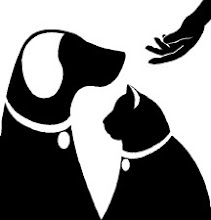The Humane Society of the United States has brought to light the deplorable conditions of many unlicensed breeding facilities in Virginia. The undercover operation shows filthy, crowded conditions and lack of veterinary care for dogs that exist solely for their breeders' profit. It's easy to feel shock and horror that people could operate these inhumane facilities. But are the breeders the only ones to blame? What about those of us who purchase these dogs? In our desire for a puppy of a certain breed, do we shirk our responsibility to learn where the puppy came from? If we buy a puppy based on a cute photo on the internet, what do we know about the conditions in which it has lived? What is that purchase price going to: The pet store that doesn't ask questions of their suppliers and the breeders who protect their profits by keeping operating costs low?
Besides mistreating the breeding animals and their pupppies, these puppy mills are adding to the pet overpopulation crisis by selling unneutered dogs. Do any of these breeders or pet stores require neutering? I doubt it. What can we do? Like the illegal drug market, if there were no consumer demand, there would be no suppliers. Obviously, one answer is to adopt dogs from the large supply of homeless animals already in our Virginia shelters. If you decide to buy a purebred dog, investigate first and make sure you are buying from a reputable breeder. Visit the facility and ask for references from a veterinarian. Find out whether a breeder is primarily interested in the welfare of the dogs or in making a sale.
Until we consumers demand change, puppy mills will continue to exist. Let's look at our own contribution to the problem and make decisions that promote animal welfare.
Wednesday, November 07, 2007
Friday, November 02, 2007
Deer Collisions
It seems that the first two weeks in November tend to have the greatest number of vehicle-deer collisions. Obviously, this can be deadly for both people and deer. With the frequency of deer sightings in Northern Virginia, we need to be on the alert when driving even in urban areas.
The Insurance Information Institute gives defensive driving tips for avoiding deer including being particularly cautious from sundown to midnight and at dawn and never swerving out of your lane to avoid a deer.
According to the Humane Society of the United States
"The breeding season for deer occurs between October and January. This period—termed the "rut"—involves dramatic physiological and behavioral changes in male deer. ... Nervous and almost constantly active during the rut, males wander into residential areas and places where they would otherwise never be seen."
For our own well being as well as for wildlife, let's be alert and careful while driving.
The Insurance Information Institute gives defensive driving tips for avoiding deer including being particularly cautious from sundown to midnight and at dawn and never swerving out of your lane to avoid a deer.
According to the Humane Society of the United States
"The breeding season for deer occurs between October and January. This period—termed the "rut"—involves dramatic physiological and behavioral changes in male deer. ... Nervous and almost constantly active during the rut, males wander into residential areas and places where they would otherwise never be seen."
For our own well being as well as for wildlife, let's be alert and careful while driving.
Subscribe to:
Comments (Atom)
